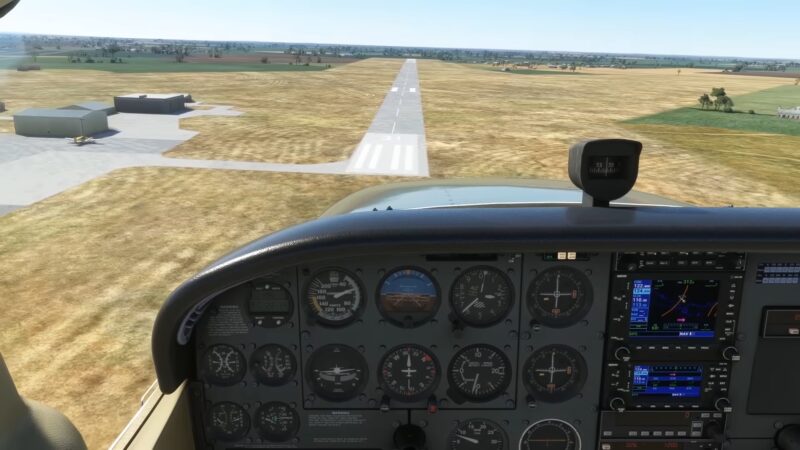Flying is a marvel of human achievement. Every day, thousands of planes crisscross the skies, connecting people and places in a matter of hours. But have you ever wondered how pilots navigate these journeys, especially when it comes to the critical phase of descending towards an airport?
It’s not as simple as just pointing the nose down and hoping for the best. Pilots follow a meticulously planned process to ensure a safe, comfortable, and timely arrival.
Key Takeaways
- Pilots plan the descent phase before the aircraft even takes off, using information like weather, aircraft weight, and airport elevation to calculate the top of descent (TOD).
- ATC is crucial in managing aircraft descent, ensuring safe spacing between aircraft and providing specific instructions for when and how to descend.
- The FMS automates in-flight tasks, including descent calculations, by considering the aircraft’s current position, route, and air traffic restrictions to calculate the optimal TOD.
- ADS-B technology allows for more accurate tracking of aircraft by broadcasting their position via satellite navigation, aiding in maintaining safe distances during descent and approach phases.
- Pilot’s expertise remains vital in adjusting the descent plan in response to changing conditions, ensuring the flexibility and safety of the flight.
Basics of Descent
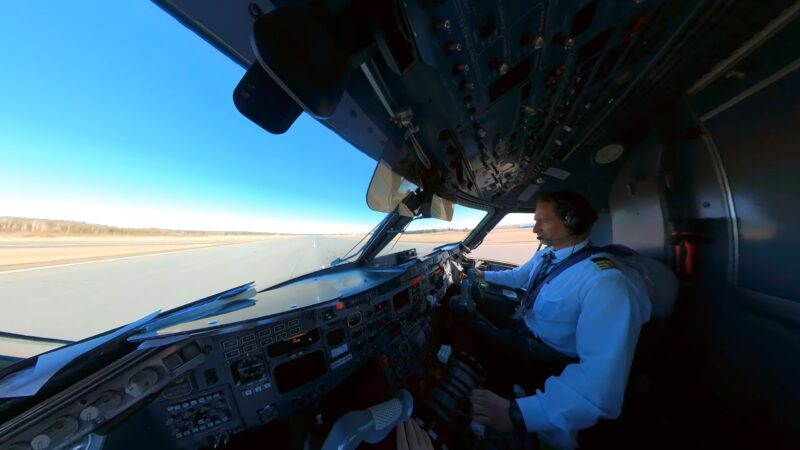
Descent in aviation is the process of decreasing altitude, leading up to the landing at the destination airport. It’s a phase that requires precise planning and execution. Pilots don’t decide to descend on a whim; they follow specific procedures that begin well before the plane starts its downward path.
Understanding the dynamics of airflow around the aircraft, such as the swirling air masses generated by wingtip vortices, is crucial for maintaining stability and safety throughout this phase.
Role of Air Traffic Control
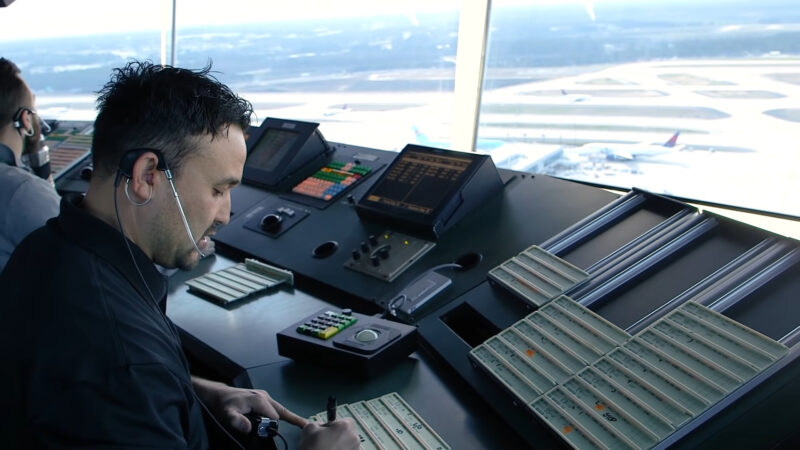
Air Traffic Control (ATC) plays a crucial role in this process. They ensure that aircraft are spaced appropriately to avoid conflicts and manage the flow of traffic into and out of airports. Pilots communicate with ATC to get clearance for descent and are often given specific instructions on when and how to descend.
Pre-Flight Planning
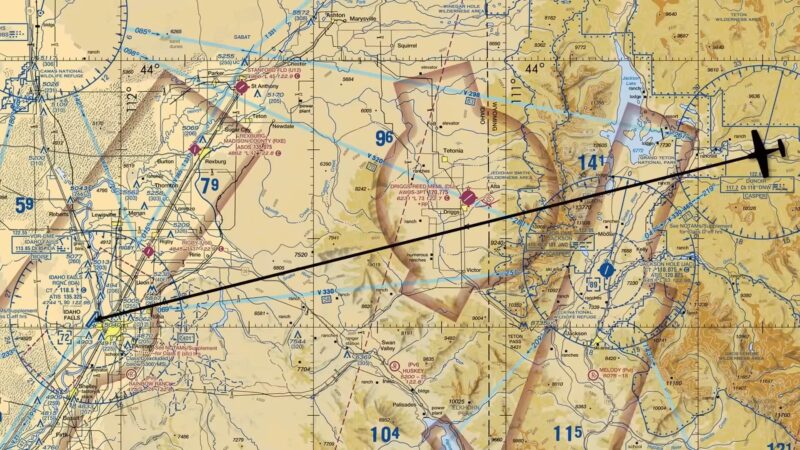
Descent planning starts even before the aircraft leaves the ground. Pilots use information like weather, aircraft weight, and the airport’s elevation to calculate the top of descent (TOD) — the point at which the aircraft should start descending to arrive at the airport at the right altitude and speed for landing.
How Pilots Calculate the Top of the Descent?
Descending isn’t just about going down. It’s about doing so efficiently and safely, considering factors like speed, fuel consumption, and passenger comfort. Pilots use several methods to determine the best descent path.
The TOD calculation involves complex mathematics, but in simple terms, pilots use the aircraft’s altitude, the distance to the airport, and the desired approach speed to determine when to start descending. Modern aircraft are equipped with computers that assist in these calculations, making the process more accurate.
Descent Profiles
Pilots follow specific descent profiles, which are predetermined paths that consider the aircraft’s performance characteristics and environmental factors. There are two main types:
- Continuous Descent Approach (CDA): This is an efficient descent method where the aircraft gradually descends with minimal level flight, reducing fuel burn and noise.
- Step Descent: In some cases, ATC may instruct pilots to descend in stages, leveling off at certain altitudes before continuing the descent. This method is often used for traffic management or when weather conditions prevent a CDA.
In addition to these technologies, the onboard auxiliary power system plays a pivotal role in supporting critical operations, ensuring that essential systems have the power they need, even when the main engines are powered down.
Tools and Technologies
Today’s aircraft come equipped with advanced navigation systems that aid pilots in managing the descent phase.
1. Flight Management System (FMS)
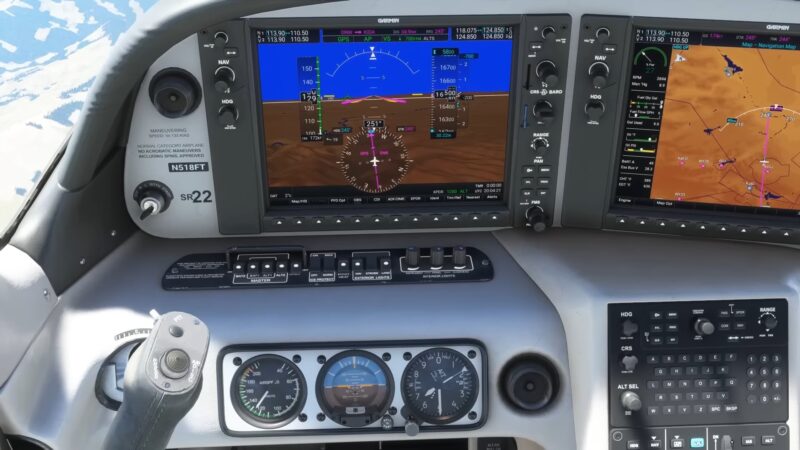
The FMS is a computer system that automates a wide range of in-flight tasks, including descent calculations. It takes into account the aircraft’s current position, the route, air traffic restrictions, and the planned approach to calculate the optimal TOD.
The FMS is also capable of adjusting the flight path in real-time to account for unexpected changes such as weather conditions or ATC instructions, significantly enhancing flight safety and efficiency.
2. Automatic Dependent Surveillance-Broadcast (ADS-B)
ADS-B is a surveillance technology that allows aircraft to determine their position via satellite navigation and broadcast it, enabling them to be tracked more accurately. This technology aids in maintaining safe distances between aircraft, especially during the descent and approach phases.
Sharing precise location data with both ATC and other aircraft equipped with ADS-B receivers enhances situational awareness and reduces the risk of mid-air collisions.
FAQs
What happens if a pilot starts the descent too late?
If a pilot starts the descent too late, the aircraft may descend too rapidly, which can lead to passenger discomfort due to the increased rate of change in cabin pressure. It can also lead to the aircraft overshooting the intended runway or approach path, requiring a go-around procedure to be initiated for another landing attempt.
This situation demands extra fuel and time, adding to operational costs and potentially causing delays in the flight schedule.
Can pilots change the descent plan during the flight?
Yes, they can. Factors such as changes in weather conditions, air traffic control requirements, or unexpected turbulence can necessitate adjustments to the descent path or timing. Pilots must remain flexible and responsive to such changes to ensure the safety and comfort of the flight.
How do pilots decide which descent method to use?
Pilots decide on the descent method based on several factors, including the type of aircraft, current and forecasted weather conditions, air traffic, and specific instructions from air traffic control.
The choice between a continuous descent approach and a step descent, for instance, will depend on optimizing fuel efficiency, minimizing noise pollution, and ensuring safety and compliance with air traffic management procedures.
What role do passengers play in the descent phase?
While passengers do not play a direct role in the descent phase’s planning or execution, their behavior can indirectly affect it. For example, adherence to the cabin crew’s instructions during descent, such as fastening seatbelts and securing loose items, ensures safety.
Additionally, passenger comfort is a consideration in planning descent to minimize the effects of changes in cabin pressure and turbulence.
How does weight affect the descent phase of a flight?
The weight of an aircraft affects its descent phase by influencing the rate at which the aircraft can safely descend and the distance required to slow down and land. Heavier aircraft may require a longer distance to descend and a more gradual approach to manage the kinetic energy and ensure a safe landing speed.
Pilots must consider the aircraft’s weight during the descent planning to adjust the flight path accordingly.
Do pilots manually control the aircraft during descent?
Pilots can control it manually but they often use the autopilot system to manage the descent path, especially in modern aircraft with advanced flight management systems. The autopilot can precisely follow the calculated descent profile, maintaining optimal speed and trajectory.
However, pilots are always ready to take manual control if the situation requires it, such as in response to ATC instructions or unexpected conditions.
The Bottom Line
As we’ve seen, determining when to descend is a complex process that starts long before the aircraft begins its downward journey. It involves a blend of pre-flight planning, sophisticated technology, and pilot expertise, all coordinated to ensure that each landing is as safe and smooth as possible.
Despite the advanced technology, the pilot’s judgment remains paramount. Pilots must constantly assess conditions and may need to adjust the descent plan in response to changing weather, instructions from ATC, or unexpected traffic. Their expertise ensures the flexibility and adaptability needed for safe flight operations.
